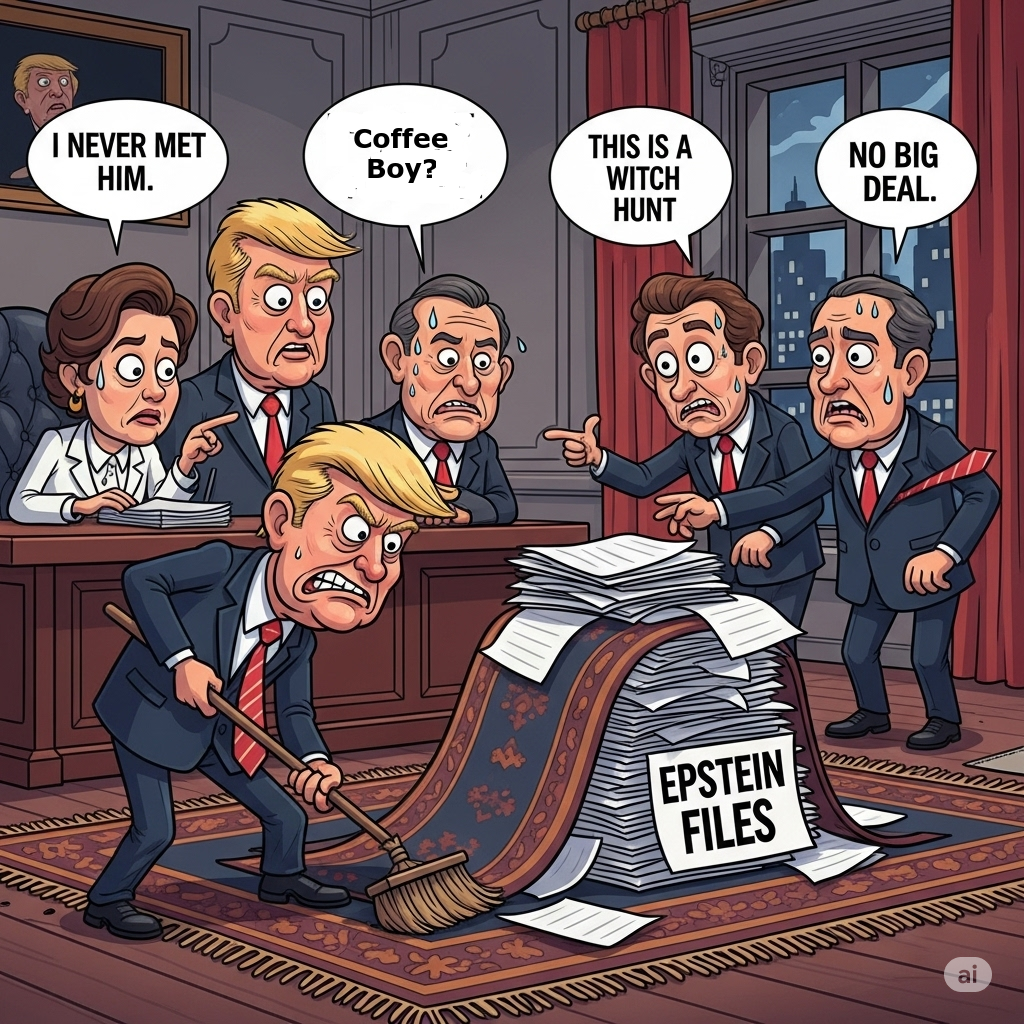Inside Trump appointees Epstein cover-up. The questionable actions and shifting narratives from within the White House. Names named. Facts laid bare.
1. R. Alexander Acosta (Former Secretary of Labor, U.S. Attorney for Southern District of Florida at time of deal)
The Evidence: Crafting the “Sweetheart Deal”: As the U.S. Attorney, Acosta oversaw the 2008 non-prosecution agreement that allowed Epstein to plead guilty to state prostitution charges instead of facing a much harsher federal indictment for sex trafficking. This deal provided immunity to unnamed “potential co-conspirators,” which has been a massive point of contention.Failure to Notify Victims: A federal judge later found that Acosta’s office acted illegally by not notifying Epstein’s victims of the plea deal, depriving them of their rights to be heard and seek restitution. This lack of transparency and victim exclusion is a significant ethical and legal failing.Severity of Uncharged Federal Crimes: Federal prosecutors at the time had compiled a substantial case for 60 federal counts against Epstein, including evidence of a “sexual abuse pyramid scheme” involving at least 36 underage girls. The fact that Acosta’s office settled for a state deal with a mere 13-month jail sentence (where Epstein enjoyed significant privileges, including leaving jail daily) for such grave allegations is widely seen as an incredibly lenient and questionable outcome.Resignation Under Scrutiny: Acosta ultimately resigned from his cabinet position in 2019 due to the renewed public outcry and scrutiny over his role in the Epstein deal after Epstein’s re-arrest. While a resignation isn’t an admission of guilt, it signifies that his actions were deemed serious enough to be politically untenable.2. Pam Bondi (Current Attorney General, Former Florida Attorney General)
The Evidence: Contradictory Statements on “Client List”: Bondi created immense public anticipation by publicly stating she had an “Epstein client list” on her desk and promising a “truckload” of previously withheld evidence, including “tens of thousands of videos of Epstein with children or child porn.” She even held White House briefings where “The Epstein Files” were displayed.Abrupt Reversal and “No List” Conclusion: However, the Justice Department, under her leadership, later issued a memo explicitly stating there was no “client list” and no credible evidence of blackmail against prominent individuals. This sudden and stark contradiction to her prior assertions is highly suspicious. It suggests either a significant misrepresentation of facts to the public or a deliberate decision to walk back earlier promises, both of which are damaging to trust and transparency.Withholding of Information: Despite the earlier promises, the DOJ concluded that “no further disclosure would be appropriate or warranted,” citing victim protection and the nature of the material. Critics argue this is a convenient pretext to keep information from the public, especially given the earlier claims of widespread, incriminating evidence.3. Donald Trump (Current U.S. President, Prior Social Acquaintance of Epstein)
The Evidence: Past Relationship and Public Comments: Before Epstein’s crimes became widely known, Trump and Epstein moved in the same social circles. Trump was quoted in a 2002 New York Magazine profile of Epstein saying, “I’ve known Jeff for 15 years. Terrific guy. He’s a lot of fun to be with. It is even said that he likes beautiful women as much as I do, and many of them are on the younger side.” While this doesn’t directly implicate Trump in Epstein’s crimes, it shows a comfort level and apparent knowledge of Epstein’s unsavory interests.Attempts to Downplay and Dismiss: More recently, Trump has attempted to distance himself from Epstein and, critically, has dismissed the ongoing public concern over the case as an “Epstein hoax” and a distraction. He has publicly chided his own supporters for their “fascination” with the case. This strong, almost dismissive stance by a sitting president, especially after his administration initially stoked expectations of revelations, is seen by critics as an effort to shut down further inquiry and control the narrative.Involvement of Key Figures in His Administration: The fact that both Alexander Acosta (who enabled the original lenient deal) and Pam Bondi (who made and then walked back promises of revelations) held, or currently hold, prominent positions in his administration shows an inner circle that has, at various points, been connected to the controversial handling of the Epstein case.4. Kash Patel (Current FBI Director) & Dan Bongino (Current FBI Deputy Director)
The Evidence (Indirect and Related to Current Handling): Prior Public Statements vs. Current Stance: Both Patel and Bongino, prior to their current appointments, were vocal proponents of the idea that Epstein’s death was suspicious and that more information about a “client list” or high-profile co-conspirators needed to be revealed. Bongino, in particular, has openly stated he believed Epstein “was murdered” to protect elites.Sudden Shift in Narrative: Upon assuming their high-ranking positions within the FBI under the current administration, their public stance has largely aligned with the official DOJ/FBI memo, which concluded Epstein died by suicide and there was no “client list.”Reports of Internal Clashes: Recent reports indicate significant internal clashes between Bondi, Patel, and Bongino over the handling and release of the Epstein files. Bongino has reportedly considered resignation due to these disagreements, and there are suggestions he is being made a “fall guy” for the release of the incomplete surveillance footage.Logical Implication: This sudden change in their public narrative, coupled with reports of internal conflict, suggests that their previous outspoken demands for transparency have been curtailed once they were in positions of power. It raises the question of whether they are now constrained by directives to suppress information, or if their earlier assertions were merely speculative. The internal friction further hints at a struggle over what information should be made public, which is a hallmark of a potential cover-up.Acosta’s past actions, combined with the cumulative ‘incriminating evidence’ related to these other individuals (including the shifting narratives, questionable decisions, and internal turmoil within the administration), all provide a powerful and logical basis that a cover-up is actively in progress.


